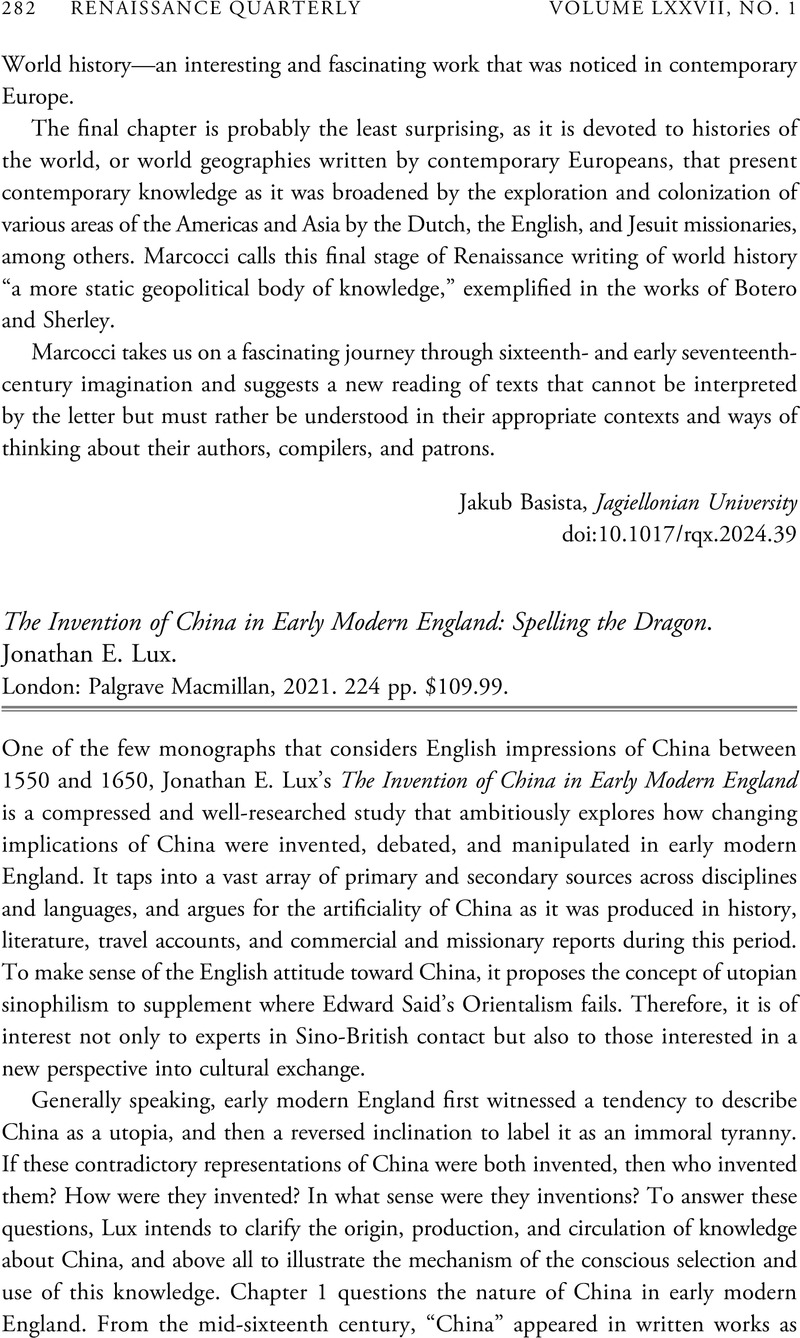No CrossRef data available.
Article contents
The Invention of China in Early Modern England: Spelling the Dragon. Jonathan E. Lux. London: Palgrave Macmillan, 2021. 224 pp. $109.99.
Review products
The Invention of China in Early Modern England: Spelling the Dragon. Jonathan E. Lux. London: Palgrave Macmillan, 2021. 224 pp. $109.99.
Published online by Cambridge University Press: 24 April 2024
Abstract
An abstract is not available for this content so a preview has been provided. Please use the Get access link above for information on how to access this content.

- Type
- Review
- Information
- Copyright
- Copyright © The Author(s), 2024. Published by Cambridge University Press on behalf of The Renaissance Society of America



